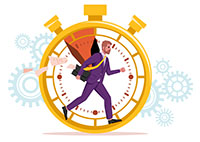Every year, the arrival of Daylight Savings Time (DST) marks the beginning of longer days and the anticipation of warmer weather. However, while the extra hour of daylight in the evening may be welcomed by many, it comes with a potential downside – an increase in automobile accidents. The shift in time can disrupt our internal body clocks, leading to fatigue and decreased alertness on the roads. In this article, we explore the factors contributing to the heightened risk of accidents after springing forward an hour and discuss ways to mitigate these risks.

Sleep Deprivation and Fatigue
The transition to DST often results in a loss of one hour of sleep, disrupting individuals’ circadian rhythms. This sleep deprivation can lead to increased fatigue, reduced concentration, and impaired reaction times. Studies have shown that even a small reduction in sleep duration can significantly affect cognitive performance, making drivers more susceptible to errors and accidents.
Disrupted Circadian Rhythms
Our bodies operate on a natural internal clock known as the circadian rhythm, which regulates sleep-wake cycles and alertness levels. When the clocks spring forward, this internal clock is suddenly misaligned with external time cues, causing a temporary state of jet lag. The resulting grogginess and disorientation can negatively impact a driver’s ability to stay focused and make split-second decisions while on the road.
Changes in Visibility
While DST provides more daylight in the evenings, the mornings become darker for a period after the clocks are set forward. This shift can create challenges for drivers, as reduced visibility in the morning hours may contribute to an increased number of accidents. Adjusting to the altered lighting conditions requires time, and drivers may find themselves navigating unfamiliar situations during their morning commute.
Rush Hour Traffic
The longer days of DST often lead to an increase in outdoor activities, social events, and evening commutes. This can result in heavier traffic during the evening rush hour, as more people take advantage of the extended daylight. Increased congestion can contribute to stress and impatience among drivers, leading to a higher likelihood of accidents.
As we welcome the longer days of Daylight Savings Time, it’s crucial to acknowledge and address the potential risks it poses to road safety. By understanding the factors contributing to increased chances of automobile accidents and taking proactive measures, both individuals and communities can contribute to safer roads during the transition to DST. Prioritizing sleep, adjusting gradually, and promoting responsible driving habits can help mitigate the risks associated with the spring forward of the clocks.
If you are injured in an accident in the coming days, the Hodge Law Firm is here to help. Please feel free to reach out and ask any questions you might have before accepting any settlement from an insurance company. Bad accidents can happen to good people. Let us advocate for you.
CLICK HERE to contact us today!